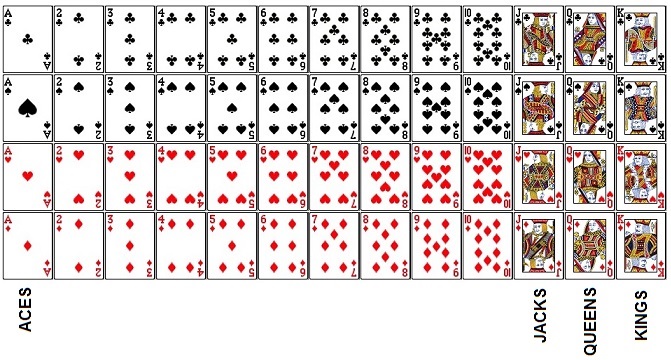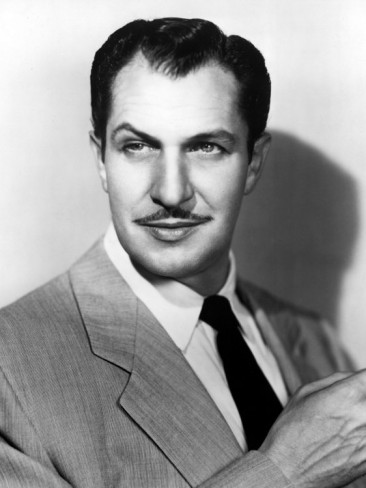Blackjack King Queen Jack Worth
- Queen Blackjack Value
- Blackjack King Queen Jack Worth The Money
- Blackjack King Queen Jack Worth Aj
- How Much Is A Jack In Blackjack

The game of Black Jack is played between the dealer and the players. Score is determined by the sum of the values of the cards played where King, Queen, and Jack are worth 10 pts, an Ace is worth either 11 points or 1 point and all other cards are worth their face value. Upon winning, the player will receive back twice the amount of his. Regarding the generation of numbers between 1-10, ace, king, queen, and jack: it might be helpful to assign each card a numeric index. 2-10 are obvious, and you can make your own values for jack, queen, king, and ace. One thing to especially note is that there's no 1, if you're also generating ace.
Blackjack is one of the most popular casino table games. It’s fun, simple to play, and unlike many games, offers a chance to beat the house through skill. All you need is some knowledge and confidence to make smart choices. Start right here.
The Object of the Game
In Blackjack, also known as 21, the object of the game is to beat the dealer, not the other players. There are two ways to win: Get a hand of cards with a higher total points value (up to 21) than the dealer; or not to “bust”, i.e. get a total over 21 points, before the dealer does. That’s it.
How the cards work
In Blackjack, only the card’s face value counts, not the suit. So, for example, the 8 of spades is counted as 8 points. The total number of points of the cards equals the value of the hand.
Numbered Cards
Clubs, diamonds, hearts and spades numbered from 2-10 are worth their face value.
Picture Cards
Picture cards are worth 10 points each, so the King, Queen and Jack are each valued at 10 points.
Aces
The ace is worth either 1 point, or 11 points: it’s the player’s choice and depends on the hand.
What's in a hand?
What's a bust, a push or a soft hand? Before you play the game, get a handle on the terms:
Blackjack
A hand of two cards that adds up to 21
Soft hand
A hand of two cards, one of which is an ace
Hard hand
A hand of two cards, without an ace
Push hand
When your total is the same as the dealer’s
Bust hand
A hand that totals more than 21
PreviousNextHow to play Blackjack in four steps
Start with a game plan; set a budget in advance and stick to it.
Know how a round is played, from the points value for every card and hand, to what it takes to beat the dealer.
Hit, stand, split or double down: Learn all the right moves and how to use them.
Choose the right Blackjack table, starting with the lowest minimum if you’re new to the game. Feel free to watch at first to get the feel of the play.
1. Start with a Plan
Blackjack is exciting. Be sure to have a game plan before you play, so you don’t get carried away. Start with a budget.
Set a budget
Decide how much you want to spend in advance. Treat this as part of your entertainment budget: Money you’d spend on a night out, not expecting to bring it home.
Don’t bring credit cards
To make sure you only spend what you bring, use cash and leave the cards at home.
Set a win limit
Queen Blackjack Value
It’s no fun to be up and then lose it all. When you’re winning, decide in advance when it’s time to walk away. Some players set this at the point when they double their money.
2. How to play a round
Let the games begin. A round of Blackjack starts with the dealer. If the dealer doesn't have Blackjack to start, then regular play begins.
The action starts with players placing bets, using chips purchased from the dealer, until the dealer signals “no more bets”. The dealer then deals two cards facing up to each player, and two to herself, with one card face up, the other face down.
If she has a ten or an ace, she will check to see if the face-down card adds up to a Blackjack, or 21 points. If so, the round is over and all players automatically lose – unless one of the players also has Blackjack, in which case they get to keep their original bet.
If the dealer goes over 21 points, then any player who didn’t already bust, or exceed 21, will win. If the dealer doesn’t bust, then the higher point total between the player and dealer will win. If point totals are the same, it’s a tie, or push, and the player keeps their original bet.
Previous
 Next
Next3. Know the moves
Each player, starting from the dealer's left, starts with two cards face up and must decide their next move from four possible options:
Hit
This is to request another card from the dealer when you have a low hand, such as 10 points or less. If this card takes your total points above 21, then it’s a “bust”, or loss. The move: Tap your finger on the table behind your cards.
Stand
A player is satisfied with their points total, such as a hand of 17 or more, and will “stand”, or stay with the hand as is. The move: Wave your hand over the cards, palm down.
Split
A player with two similar cards can choose to separate these into two individual hands, called a split. With this move, a player must make another bet equal to the original bet.
The dealer will automatically give the first hand a second card, which the player may hit, stand, or double, before moving to the second hand. The move: Show the dealer a splitting gesture of your index and ring finger.
Tip
When splitting aces, each ace gets only one card. If the player gets a ten and ace after splitting, then it counts as 21 points (not a Blackjack).
Double Down
Double the initial bet in return for receiving one, and only one, draw card. The move: Place a chip next to the original chip bet on the hand.
Tip
You can only double down after you receive your first two cards and before drawing another card.
PreviousNextNot all Blackjack tables are created equal. Before you sit, select a Blackjack table for its posted minimum and maximum bets. New players might prefer to start with the lowest minimum table, usually with bets from $5 to $15. That way, the play can last longer.
Tip
For new players, it’s a good idea to watch a few rounds and get comfortable with the table, the play and the other players before getting into the game.
Tip
Many think avoiding a table where the dealer is on a “hot” streak is the way to go. But what happens in the game is only in the cards – not because of a “hot” or “cold” dealer.
What is Blackjack insurance?
Insurance is a side bet that the dealer has Blackjack and is treated independently of the main wager. It pays 2:1 (meaning that the player receives two dollars for every dollar bet) and is offered if the dealer’s up card is an Ace. This is a bet that the dealer’s down card, or “hole” card, is valued at 10.
BLACKJACK VARIATIONS & SIDE WAGERS
Blackjack is so popular that it’s spawned a number of variations, from additional side bets to more complex versions with unique betting options and play dynamics.
Blazing 7s Blackjack Progressive Side Bet
Blazing 7s Blackjack offers a progressive side bet that pays out depending on how many 7s are in your hand and the dealer’s hand – the more 7s, the more you win!
Free Bet Blackjack
Blackjack King Queen Jack Worth The Money
Free Bet Blackjack plays the same rules as normal, except that it gives you free splits and double downs!
Blackjack King Queen Jack Worth Aj
Xtreme 21 + 3 Side Bet
How Much Is A Jack In Blackjack
Xtreme 21 + 3 is a side bet that adds a little poker excitement to your standard Blackjack game – if your first two cards and the dealer’s face-up card combine into an eligible three-card poker hand, you win!
Blackjack Switch
Blackjack switch let’s you make the most of two hands, by swapping out the second card dealt to each.
Spanish 21
Remove the tens from the deck, add some new play options and bonus prizes, and what do you get? Spanish 21.
Zappit
Zappit follows standard Blackjack rules with one major twist: under the right circumstances, your opening cards can be exchanged for new ones.
War Blackjack

This exciting version of Blackjack lets you combine two bets to increase your chances of winning – one on a hand of Casino War and another on a standard hand of Blackjack.
PreviousNextReady To Play?
There are lots of different card games that can be played at casinos. Whether you are off to visit your local casino on a Friday night, or are simply popping onto a kasyno online while on the train home for work, there are a number of games that will give you a much better chance of winning than others, and blackjack is one of them
Not only is it a relatively easy game to learn, but it is also one where the house edge, which is the advantage that the casino has over the player, is relatively low, sometimes at just 1.5%.
The lower the house edge, the more chance there is of being a winner, and with blackjack, the chances of holding a winning hand are much higher than other card games such as baccarat or Texas Hold’em poker, which is why it is one of the most popular casino games for players from all over the world.
Learning the Basics
Blackjack can be played with a single deck or multiple decks, so it’s important to know which you will be playing with. The aim of the game is simple – you have to beat the dealer’s hand with the value of cards in your hand without going over the value of 21. In blackjack, face or pictures cards such as the King, Queen and Jack are all worth 10. So if you hold two face cards in your hand, you have a value of 20.
In most versions of Blackjack, the Ace card is worth either 11 or 1, so if you hold an ace and a queen, then you’ve got your target score of 21. If you hit, which is to ask for another card from the dealer, as you might only be holding a value of 14, and you go over the value of 21, then you go bust.
When is best to stand
You stand when you’ve decided that you want to play your hand against the dealer. However, you need to know when is the best time to stand or take another hit. This would depend on both the hand you are holding, as well as what the dealer has for their blackjack hand, where one of their two cards will be shown.
If the dealer has a low card, such as something between 2 to 5, it is usually safe to assume that their other card is most likely a face card, so they would have around 12-15 as their total. The dealer would need to take a hit as you can only hold if you have 16 or higher, so the chances are the dealer will take another face card and bust. So if you are holding a value or 16 or more, it would be a safe bet to stay.
However, if you see that the dealer has a face card showing, then the chances are that they also have a face card hidden. So their total could be around the 20 point mark. So if you are holding a lower value, then you will need to take a hit, and hope that you don’t go bust when being dealt the new card.
It might take a little time to get used to knowing when to stand or take a hit, but after playing a few rounds, you’ll pick up the concept pretty quickly. A lot of players will often make the mistake of sticking or taking a hit when they didn’t really need to, thus usually ending up as a loser in that round.
Splitting cards
One additional option available to players is the chance to split cards. This happens when a player is initially dealt two of the same card, for example, two sevens. They can then choose to split which means they basically have two hands to play with, and can take a hit or stick on both hands, doubling the chances of having a winning hand.
However, there are some situations where it is best not to split the cards. If you are holding two 10s, then it is better not to split, and stick with the 20 in your hand. Splitting on two tens has a great chance of you going bust. If you are dealt a pair of aces or 8s, then these are the best hand to split, and offer the great chance of being a winner of that round.
Playing blackjack at a casinó is lots of fun and very easy to get into. But when you are playing for money, you need to be aware of the best times to stick, take a hit or split. As long as you follow the basic strategies for these options, then you should have a fairly decent chance of winning. After all, it is a casino game that has one of the lowest house edges, so the chances of you winning will always look positive.
Interesting related article: “What is Gambling?“



